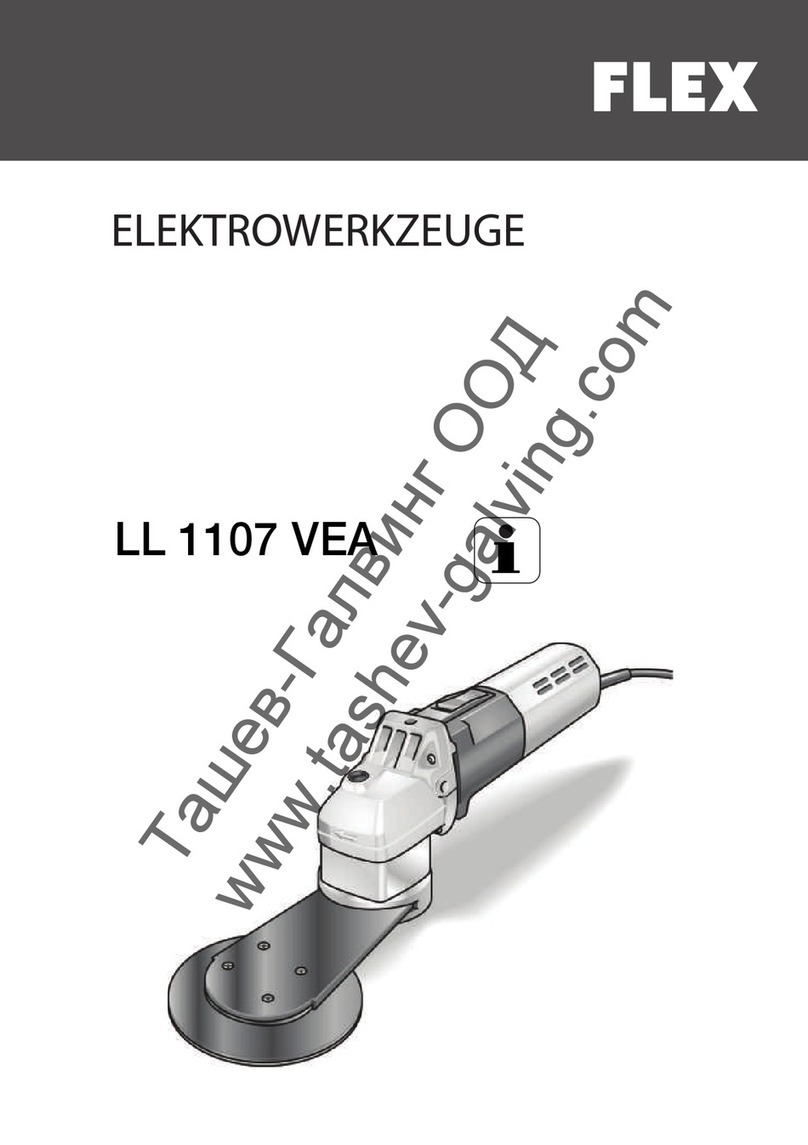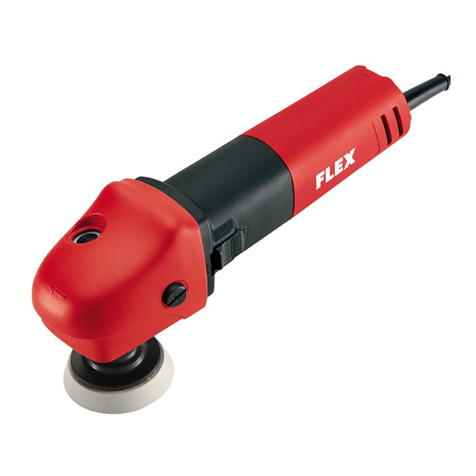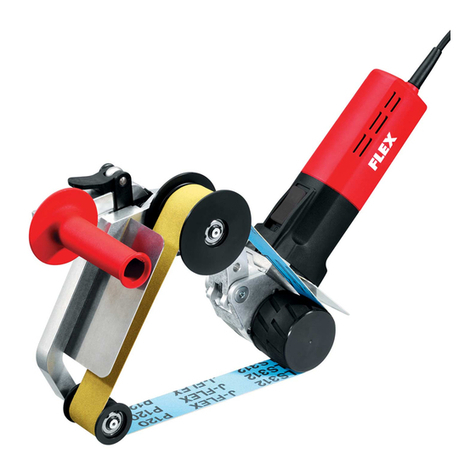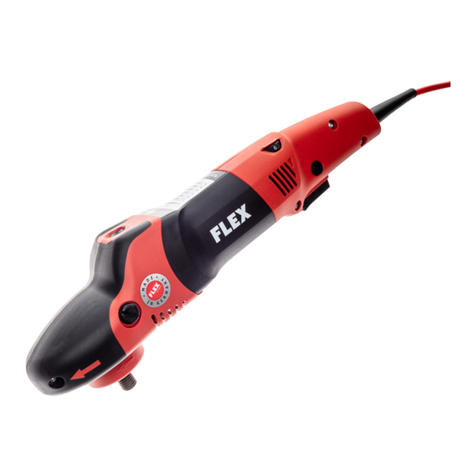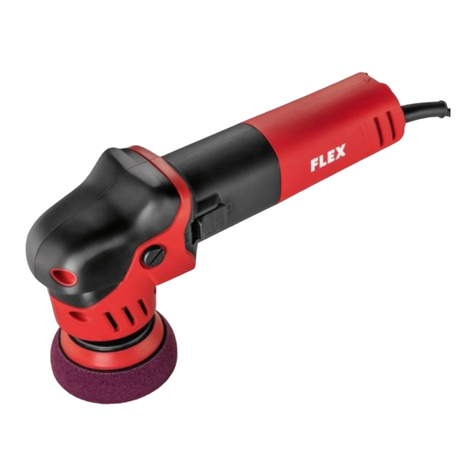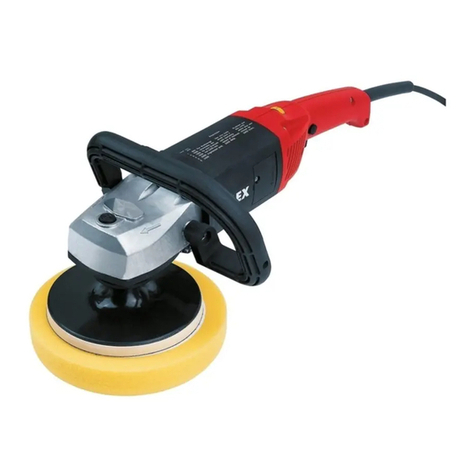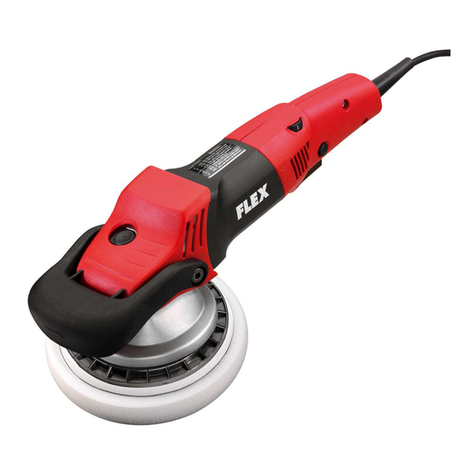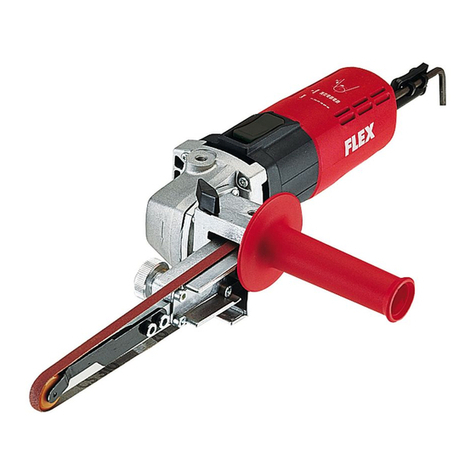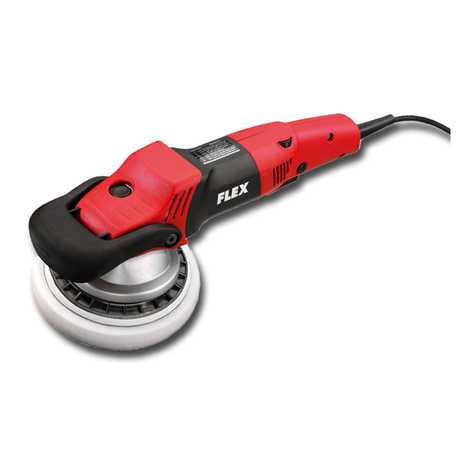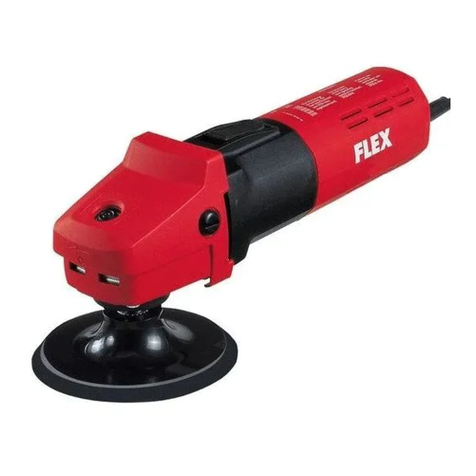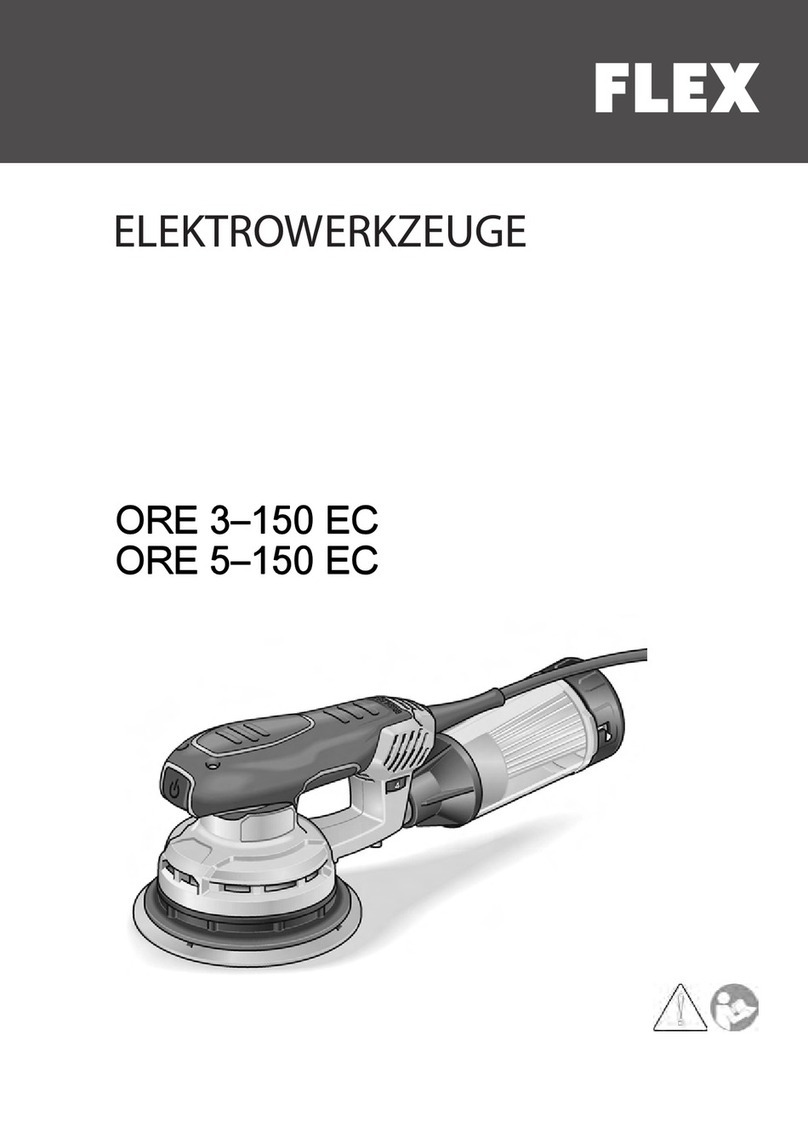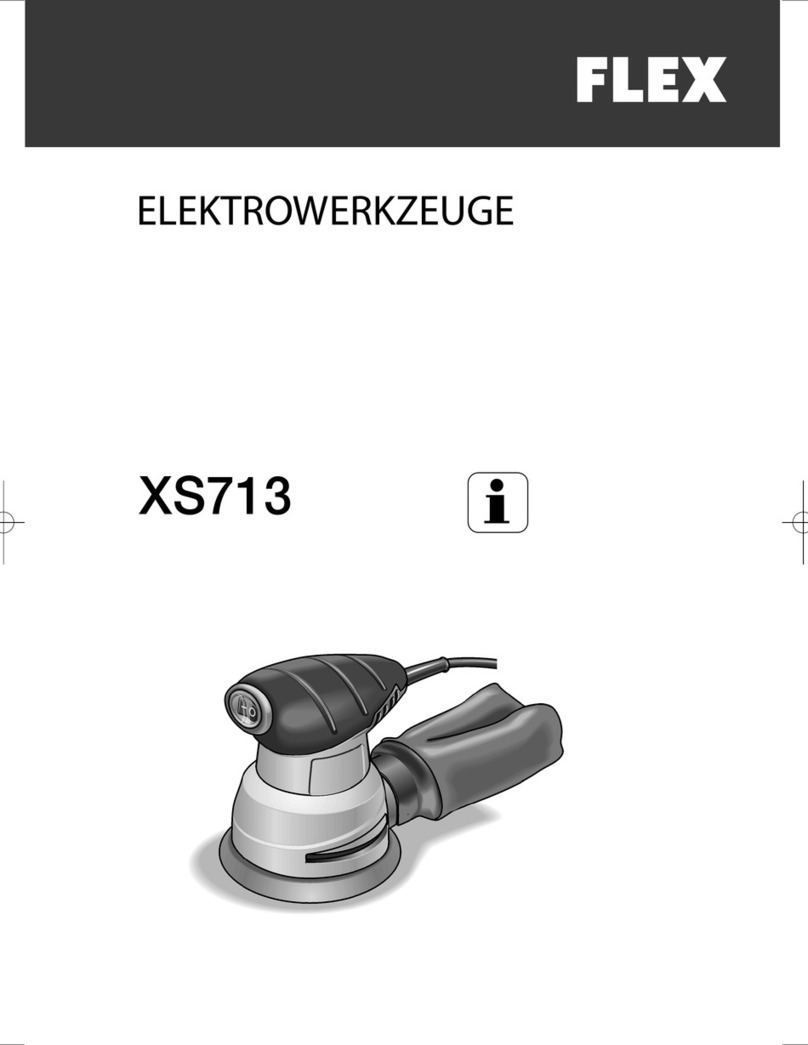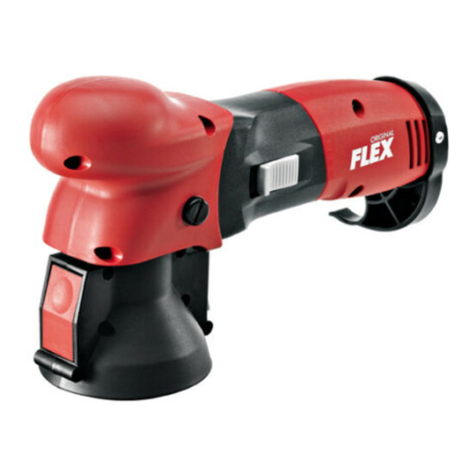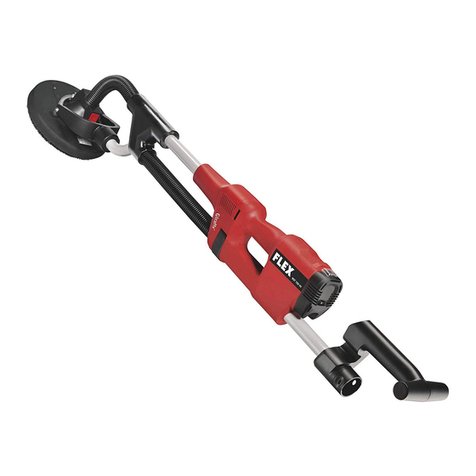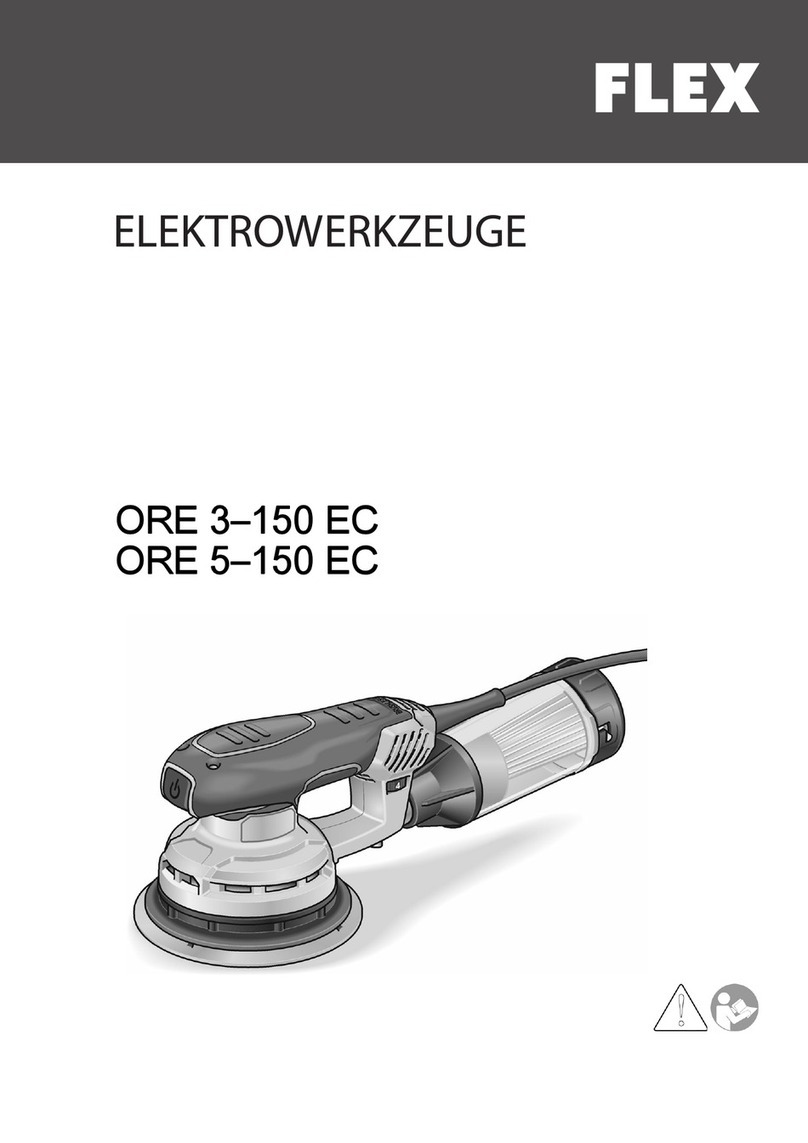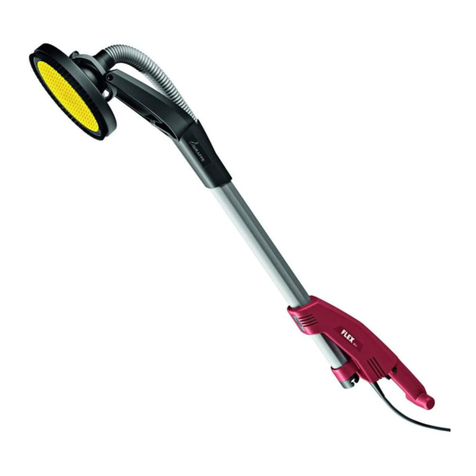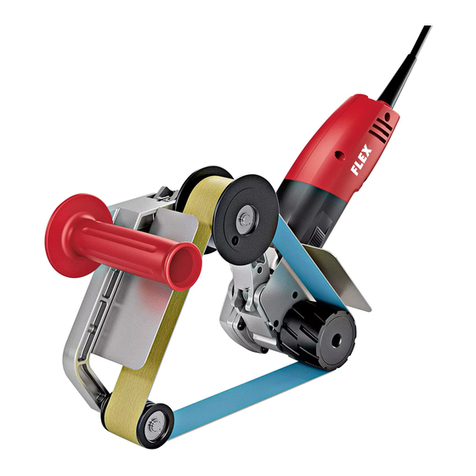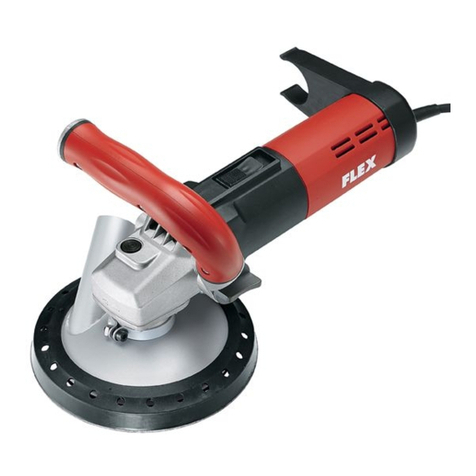
XFE 15 125 18.0-EC / XFE 15 150 18.0-EC / XCE 8 125 18.0-EC Instruction manual
5
(e)
Do not overreach. Keep proper footing
and balance at all times.
This enables better control of the power tool
in unexpected situations.
(f)
Dress properly. Do not wear loose clothing
or jewellery. Keep your hair, clothing and
gloves away from moving parts.
Loose
clothes, jewellery or long hair can be caught in
moving parts.
(g)
If devices are provided for the connec-tion
of dust extraction and collection facilities,
ensure these are connected and properly
used.
Use of dust collection can reduce dust-
related hazards.
(h)
Some dust created by power sanding,
sawing, grinding, drilling and other construction
activities contains chemicals known to the
State of California to cause cancer, birth
defects or other reproductive harm.
Some
examples of these chemicals are:
–
Lead from lead-based paints.
–
Crystalline silica from bricks, cement, and
other masonry products.
–
Arsenic and chromium from chemically-
treated lumber.
Your risk from these exposures varies,
depending upon how often you do this type of
work.
To reduce your exposure to these
chemicals:
–
Work in a well-ventilated area.
–
Work with approved safety equipment,
such as dust masks that are specially
designed to filter out microscopic particles.
– Avoid prolonged contact with dust from
power sanding, sawing, grinding, drilling,
and other construction activities. Wear
protective clothing and wash exposed
areas with soap and water. Allowing dust
to get into your mouth or eyes or to lie on
the skin may promote absorption of
harmful chemicals.
4. Power tool use and care
(a)
Do not force the power tool. Use the
correct power tool for your application.
The
correct power tool will do the job better and
safer at the rate for which it was designed.
(b)
Do not use the power tool if the switch
does not turn it on and off.
Any power tool that cannot be controlled with
the switch is dangerous and must be repaired.
(c)
Disconnect the plug from the power
source and/or the battery pack from the power
tool before making any adjustments,
changing accessories, or storing power tools.
Such preventive safety measures reduce the
risk of starting the power tool accidentally.
(d)
Store idle power tools out of the reach of
children and do not allow persons unfamiliar
with the power tool or these instructions to
operate the power tool.
Power tools are
dangerous in the hands of untrained users.
(e)
Maintain power tools. Check for
misalignment or binding of moving parts,
breakage of parts and any other condition that
may affect the power tools operation.
If damaged, have the power tool repaired
before use.
Many accidents are caused by
poorly maintained power tools.
(f)
Keep cutting tools sharp and clean.
Properly maintained cutting tools with sharp
cutting edges are less likely to bind and are
easier to control.
(g)
Use the power tool, accessories and tool
bits etc., in accordance with these instructions
and in the manner intended for the particular
type of power tool, taking into account the
working conditions and the work to be
performed.
Use of the power tool for
operations different from those intended could
result in a hazardous situation.
5. Battery tool use and care
(a)
Recharge only with the charger specified
by the manufacturer.
A charger that is suitable
for one type of battery pack may create a risk
of fire when used with another battery pack.
(b)
Use power tools only with specifically
designated battery packs.
Use of any other
battery packs may create a risk of injury and
fire.
(c)
When battery pack is not in use, keep it
away from other metal objects, like paper
clips, coins, keys, nails, screws or other small
metal objects, that can make a connection
from one terminal to another.
Shorting the
battery terminals together may cause burns or
a fire.
